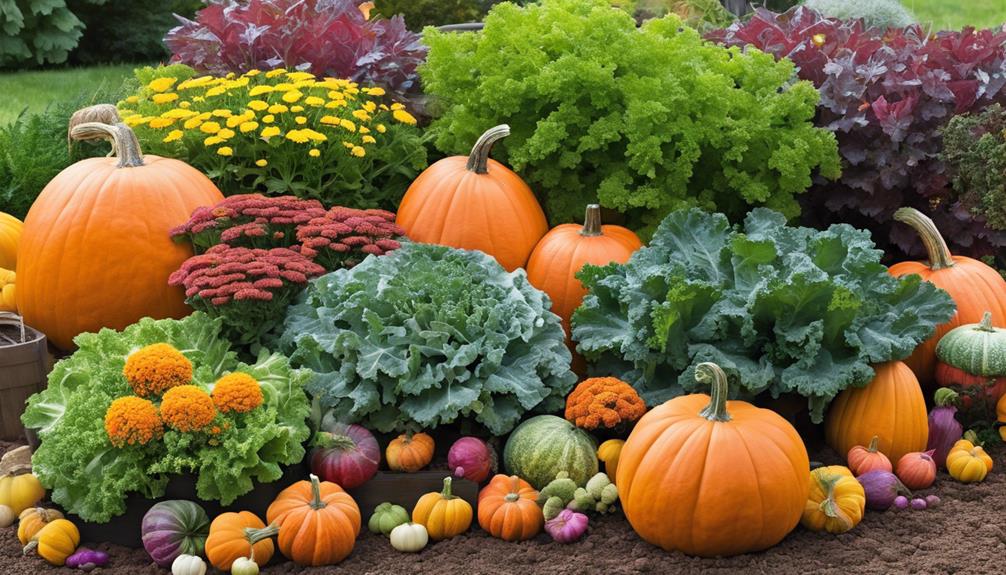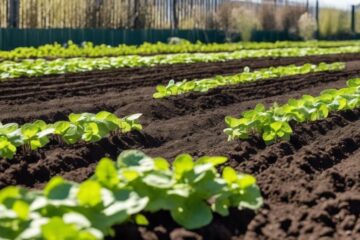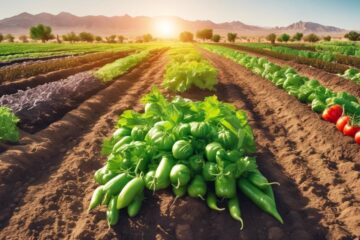Wondering what vegetables to plant in Zone 5 this fall?
Have you heard about a lesser-known crop that might just be the perfect addition to your autumn garden?
Stay tuned to discover a unique vegetable option that could surprise you with its versatility and flavor profile, adding a delightful twist to your fall harvest.
Zone 5 Fall Planting Overview
Zone 5 in the USDA Plant Hardiness Zone Map is characterized by average annual minimum winter temperatures between -20°F and -10°F. This climate feature makes it essential for gardeners in Zone 5 to select plants that can endure cold winters and to time their plantings carefully to avoid early frosts in the fall and late frosts in the spring.
Fall planting in Zone 5 offers the opportunity to extend the growing season and to enjoy a second harvest of many vegetables, as well as to prepare for the next year’s blooms with certain perennials and bulbs.
In Zone 5, fall planting sets the stage for a bountiful harvest before the winter chill arrives. Timing is crucial for successful fall planting of vegetables like carrots, spinach, Swiss chard, kale, and beets in Zone 5.
Selecting frost-tolerant varieties is essential to ensure your plants thrive even as temperatures drop. Proper soil preparation is key – make sure the soil is rich in nutrients and well-draining to support healthy growth.
Best Vegetables for Fall Planting
For successful fall planting in Zone 5, prioritize selecting frost-tolerant vegetables like carrots, spinach, Swiss chard, kale, and beets. These cool-season crops are perfect for your fall garden, thriving in the cooler temperatures and able to withstand light frosts common in the season.
By planting these vegetables before the end of August, you can ensure a bountiful harvest of nutrient-rich greens and root vegetables. Utilize your garden space effectively by timely planting, maximizing vegetable production in Zone 5.
With these fall vegetables, you can enjoy a variety of fresh and delicious options as the weather cools down, providing you with a continuous supply of homegrown goodness throughout the season.
Expanding upon the foundation of your garden with frost-tolerant vegetables, here are more details and tips to enrich your Zone 5 fall garden:
Additional Recommended Vegetables
- Radishes: Quick to mature, radishes can be sown directly into the garden in late summer for a fast, spicy addition to your fall salads.
- Broccoli and Cauliflower: These more substantial vegetables can be started in late summer for a late fall harvest. They require more space and time but are worth the effort for their nutritional benefits and versatility in cooking.
- Garlic: Although not harvested until the following summer, garlic is planted in the fall. It overwinters in the ground, developing its pungent bulbs for summer harvesting.
Timing and Scheduling Planting Tasks
| Timing | Tasks |
|---|---|
| Early to mid-October | Plant fall crops |
| Before first frost date | Schedule planting |
| Fall season | Prioritize cool-season crops |
| Before winter | Allow root establishment |
Soil Preparation and Planting Techniques
Prepare your soil by loosening it to a depth of 12 inches for optimal root development. Fall is a great time to enhance your fall garden with proper soil preparation and planting techniques. Ensure your vegetables are planted in well-drained soil with adequate sunlight for healthy growth.
Improve soil fertility by adding compost or aged manure. Follow seed packet instructions when spacing plants to promote proper development. Consistent watering of newly planted vegetables is crucial for their establishment.
To ensure the success of your fall garden in Zone 5, a thorough approach to soil preparation and planting techniques is essential. Here’s an extended strategy to maximize the health and productivity of your garden:
Detailed Soil Preparation Steps
- Soil Testing: Begin by testing your soil to determine its pH and nutrient levels. This step will inform you about the specific amendments your garden might need.
- Loosening the Soil: Use a fork or tiller to loosen the soil to a depth of 12 inches. This aerates the soil, allowing roots to penetrate more easily and improve drainage.
- Adding Organic Matter: Enrich the soil by mixing in well-rotted compost or aged manure. Organic matter improves soil structure, enhances nutrient content, and stimulates beneficial microbial activity.
- Adjusting pH: If your soil test shows pH imbalances, adjust accordingly by adding lime to raise the pH or sulfur to lower it, creating an optimal environment for your plants.
Planting Techniques for Optimal Growth
- Site Selection: Choose a site that receives at least six hours of sunlight daily, critical for the growth of most vegetables. Also, ensure the site has good drainage to prevent waterlogging.
- Spacing: Adhere to the spacing recommendations on seed packets or plant tags. Proper spacing prevents overcrowding, reduces competition for nutrients and water, and allows adequate air circulation, reducing the risk of fungal diseases.
- Planting Depth: Seeds should be planted at the depth recommended on the package. A general rule is to plant seeds at a depth twice their diameter.
- Watering: After planting, water your garden thoroughly. Consistent moisture is vital for seed germination and the establishment of seedlings. Use a gentle spray to avoid disturbing seeds or damaging fragile sprouts.
Enhancing Soil Fertility
- Green Manures: Consider planting cover crops like clover or vetch in early fall. These can be turned into the soil in the spring to add organic matter and nutrients.
- Mulching: Apply a layer of organic mulch around your plants. Mulch helps retain soil moisture, maintains an even soil temperature, and suppresses weeds. Materials like straw, shredded leaves, or wood chips are effective.
Special Considerations for Fall Planting
- Protection from Early Frosts: Be prepared to cover your crops with floating row covers or fleece to protect them from early frosts. This simple step can extend your growing season significantly.
- Season Extension: For a longer growing season, consider installing cold frames or using hoop houses. These structures can keep soil and air temperatures around your plants several degrees warmer than the outside environment, enabling you to grow vegetables well into the fall.
By diligently preparing your soil and employing these planting techniques, you can create a conducive environment for your fall crops in Zone 5. Not only does this preparation support healthy plant growth, but it also lays the foundation for a productive and rewarding fall gardening season.
Tips for Successful Zone 5 Fall Gardening
Enhance your fall gardening success in Zone 5 with these essential tips.
- Choose the Right Plants: Opt for fall vegetables like Swiss chard, kale, and lettuce for a bountiful autumn harvest.
- Address Challenges Early: Combat bolting greens and pest attacks by selecting pest-resistant varieties and strategic planting.
- Enjoy the Benefits: Revel in the advantages of planting fall vegetables, from a fresh supply of greens to increased vegetable production.
- Timing is Key: Ensure timely planting for a successful fall harvest in Zone 5, guaranteeing a continuous stream of fresh produce.
- Maximize Success: Consider the growth progress and characteristics of specific fall vegetables to make the most of your gardening efforts.
Frequently Asked Questions
What Can You Plant in Fall Zone 5?
You can plant a variety of vegetables in fall Zone 5. Carrots, spinach, Swiss chard, kale, and beets are ideal choices. Enjoy a continuous harvest of fresh produce by starting early for a bountiful autumn garden.
What Should You Not Plant in the Fall?
You should not plant warm-season veggies like tomatoes or peppers in the fall in Zone 5. Tropical plants such as eggplants and sweet potatoes won’t thrive in the cold. Stick to cool-season crops for a successful autumn garden.
When Can I Plant Perennials in Zone 5?
You can plant perennials in Zone 5 in late September to early October. This timing allows them to establish roots before winter sets in. Remember to water them well after planting to support root development in their new environment.
What Vegetables Grow Best in Zone 5?
You can plant various vegetables in Zone 5 for a bountiful fall harvest. Carrots, spinach, Swiss chard, kale, beets, broccoli, celery, and lettuce thrive in cooler temperatures. They offer a fresh and flavorful addition to your garden.
Conclusion
So, don’t let the cooler temperatures deter you from planting a fall garden in Zone 5!
With the right vegetables and proper planning, you can still enjoy a bountiful harvest.
And remember, even if you think you may not have enough time, starting small with just a few plants can still be rewarding.
Happy planting!





